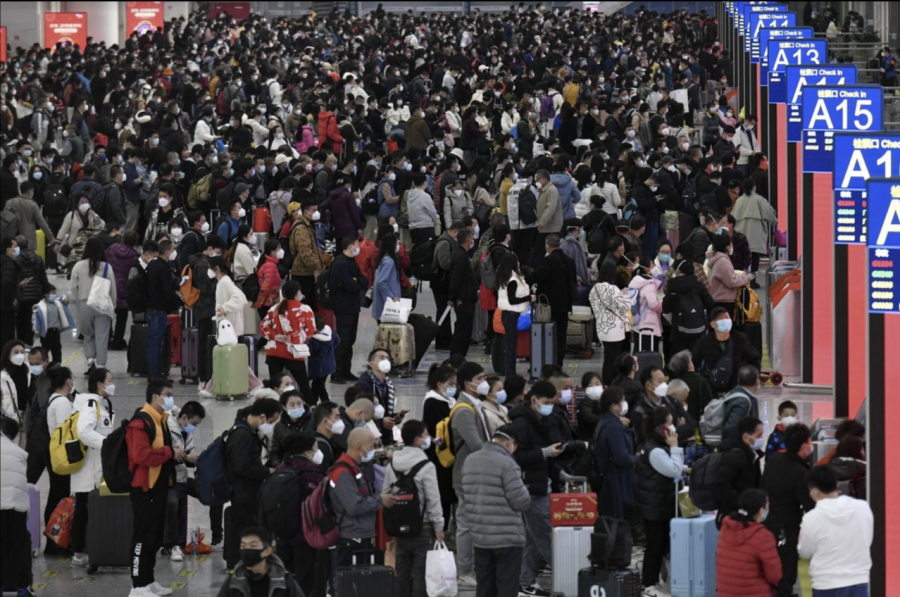A breath of freedom; China’s Reopening
Many of us have been traveling recently and while we might feel there is no need to worry, we should be wary of a major change in the travel industry. After three years of isolation, China has finally opened its borders for all, airborne travel has skyrocketed as homesick travelers are eager and ecstatic to finally be reunited with their loved ones. Yet this also makes an ideal environment for the spread of COVID-19 and its variants.
Most travelers flooding the international airports are Chinese citizens who have been separated from family and friends for over three years, desperate to reunite finally. Countless stories talk about how kids rush home to see their parents, many of whom are not in good health.
One interviewee talks about how they can’t wait to go back to China to visit their grandma who has been alone since the beginning of quarantine and feels quite desolate. This isn’t uncommon as many Chinese expatriates have lost loved ones but weren’t allowed to return to China and attend funerals. Those who live in China also express how they feel cut off from the rest of the world having to quarantine for long periods and take COVID tests often unable to access the outside world. After three years of this pattern, the opportunity for freedom seems unreal.
Not only are reunions finally allowed, but the immense impact that this reopening will have on China’s economy is expected to also help the global economy.
It’s no secret that our global economy has suffered dramatically these past few years from COVID and the ongoing Russian-Ukraine war, but with the help of China’s economy, our global economy can also slowly start to improve. Exported goods and popular tourist destinations will benefit along with the travel industry itself, and more importantly, airline companies which have lost a large portion of their revenue due to no/limited international travel. Along with this, many new business-related opportunities are now present as China is a leading economic country with a large population. However, as demand for products and services rises so does inflation.
With the number of visitors increasing, a dramatic increase in COVID-19 cases is happening. Many hospitals are running out of rooms and equipment to facilitate these patients, leaving many to stay home and deal with the sickness on their own. What’s more concerning are rural areas in China that don’t have access to these big hospitals and advanced equipment, and the majority of the population in these rural areas are at-risk people such as the elderly and children. This leads many to question the safety of China’s reopening and if it would be wise to visit China. While some visits are necessary, are tourists ready to explore China, not to mention the prices of plane tickets have skyrocketed which might further discourage tourists from visiting. Furthermore, it’s important to take statistics and the death toll into consideration.
Many websites have also repeatedly reported that China’s statistics are not accurate and they significantly under-report the daily deaths and cases. As stated by The Guardian: “With one of the lowest COVID death tolls in the world, China has been routinely accused of downplaying infections and deaths for political reasons. A June 2020 study of the country’s initial outbreak in Wuhan starting in late 2019 estimated 36,000 could have died at the time – 10 times the official figure. (Guardian staff reporter).”
Concerns about one’s health, expensive ticket prices, and inaccurate statistics can all contribute to repelling instead of drawing tourists to China, especially at a time when China desperately needs this added income. Yet with millions homesick and isolated from loved ones, many take the risk to go back and visit.



